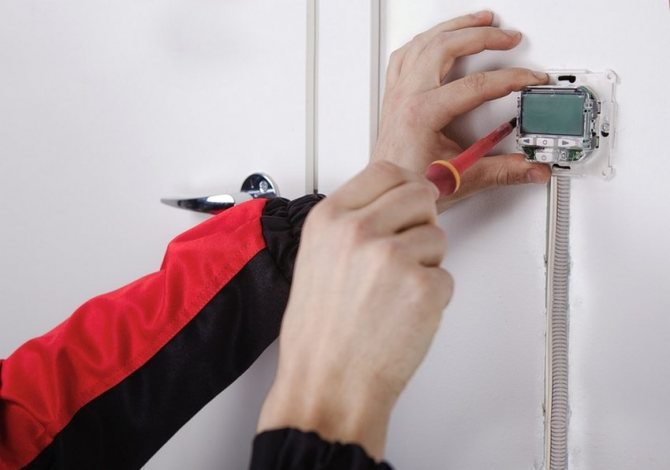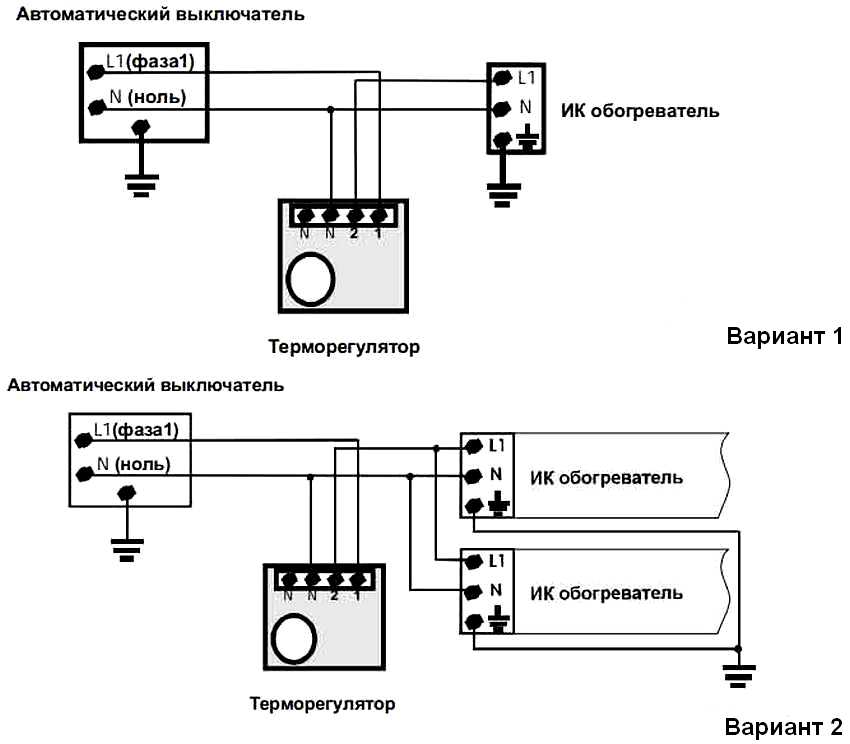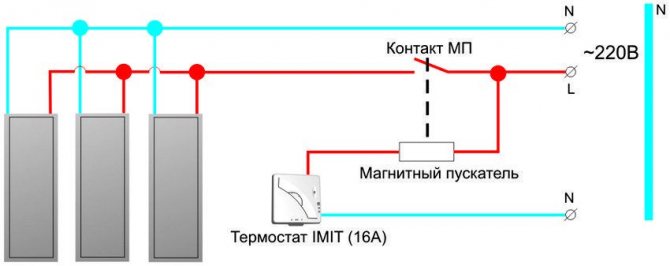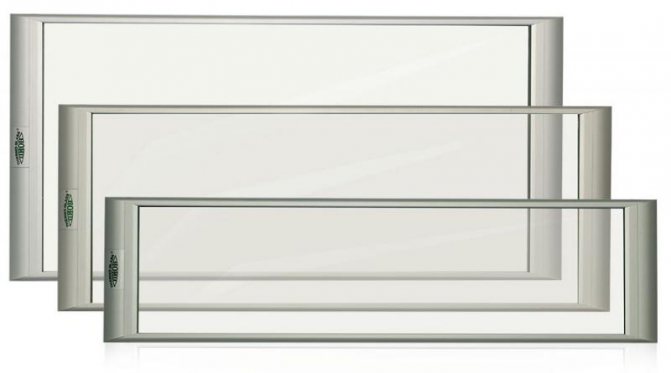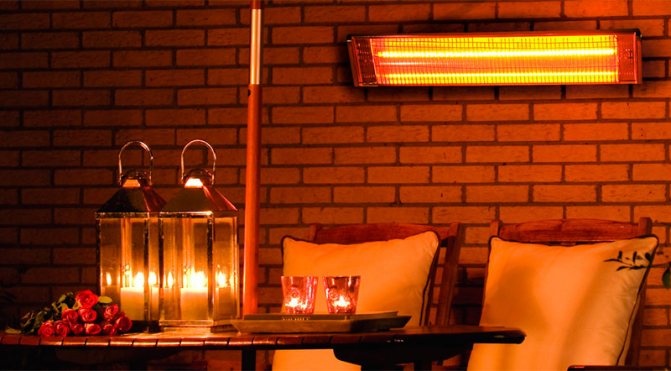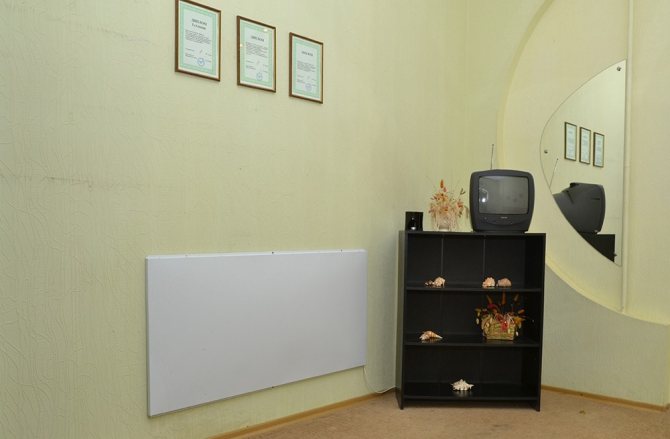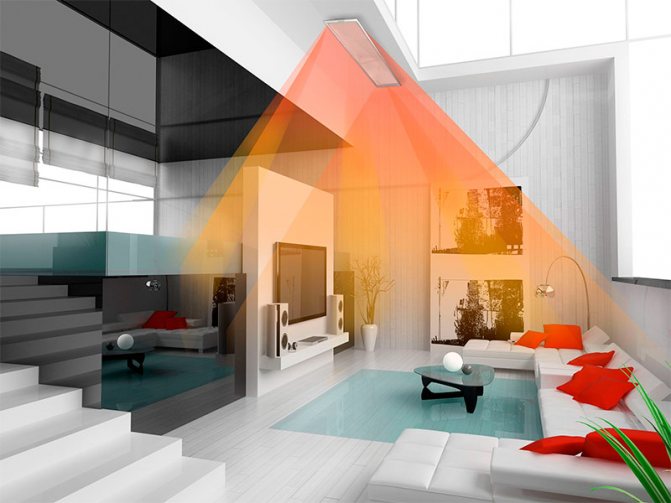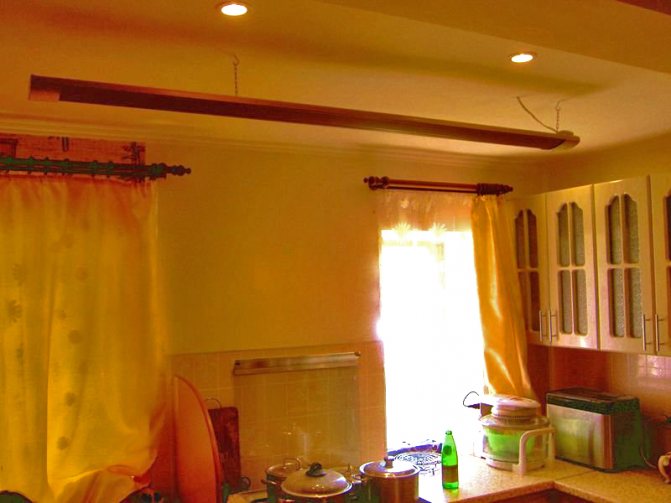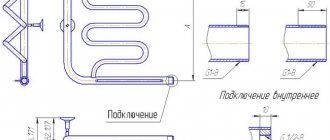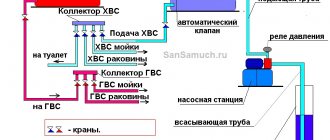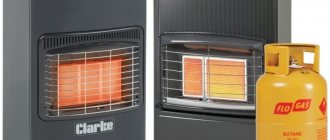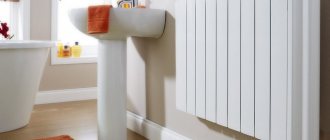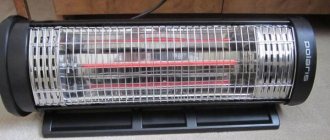Ceiling and wall infrared heater: pros and cons
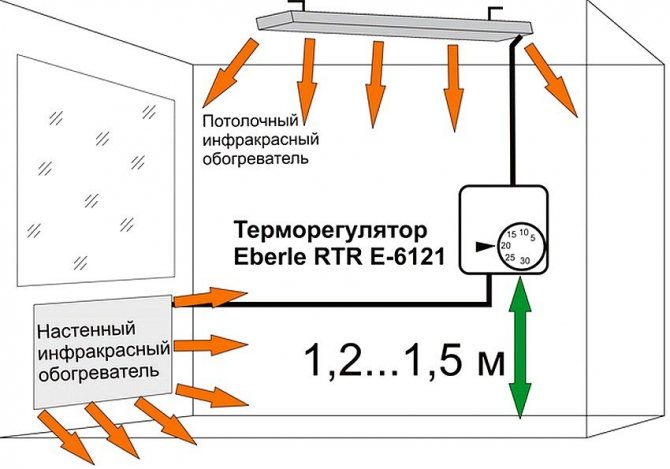
To determine whether it is worth stopping your choice on infrared heaters, we will define all the pros and cons, which are presented in the table:
| Behind | Against |
| Rapid heating of the room. | When switched off, the room temperature drops rapidly. |
| High fire safety. | The possibility of overdrying solid objects. |
| Service life from 20 to 50 years. | Uneven heating due to directional IR action. |
| Precise temperature control. | Negative effect on a person with prolonged intense exposure (dry skin, dehydration). |
| Emitters destroy viruses harmful to humans. | Bright light that stands out strongly in dark rooms. |
| Quiet operation. | Strong heating of the bulb and reflector at high-temperature IR (dangerous for children and animals that can touch the device). |
| High efficiency. |
Detailed instructions for installing and connecting with your own hands
You can enjoy all of the above benefits only by properly installing the device. The work is carried out in 5 stages and requires strict adherence to the instructions.
Preparatory stage
First you need a set of tools so that you don't have to be distracted during installation. Must be present:
- Roulette.
- Pyrometer.
- Screwdriver.
- Schurovert.
- Drill (puncher).
- Pliers.
Where and how to install an IR heater?
At this stage, it is determined with the place of attachment of the infrared heater. It can be installed on a wall, ceiling, or with a slope.
IR with a power of up to 800 W is installed in residential premises. If we are talking about public buildings, then the power starts from 1.5 kW.
The surface must be strong to support a load of 20-30 kg.
Location and height from the floor


IR is recommended to be installed near surfaces that absorb heat. Wood, carpets, stone surfaces work well. Reflective surfaces should be avoided, as when using the device, the owner will receive a minimal effect. the wiring must be routed over a non-combustible base.
The location of the heater largely depends on the specifics of the premises. There is an optimal scheme for placing IK in residential buildings. It looks like this:
- A pyrometer can measure the coldest place that requires heating. In the case of installing several heaters at once, it is required.
- The height from the floor should be 1.5 m in residential areas. In case a person spends a lot of time under the heater, the value should start from 1.8 m.
- If the installation of a high-temperature infrared heater is carried out in public buildings, offices, then the distance should be from 2 m.
Installation of the device
Installation can be done independently without spending a penny on it. The difficulty lies only in the fact that certain skills and knowledge are required, as well as knowledge of the installation process.
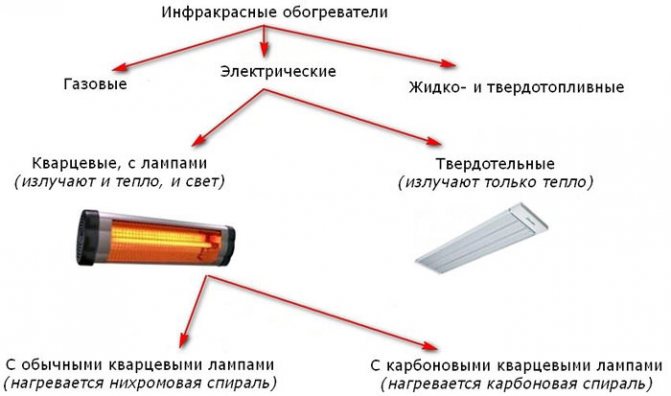

Progress:
- Determine the height of the mount from the ceiling and floor using a tape measure.
- Tighten the bolts or drill a hole with a drill (puncher) if the wall is concrete. It is important that the distance between the attachment points is the same.
- Insert the dowels into the drilled holes.
- Install the hardware.
- Fasten the device into the fixing holes.
Electrical connection


The infrared heater is installed together with a thermostat to save energy and a comfortable temperature. The device automatically turns off the IR when the room heats up to the specified temperature. As soon as the air in the room cools down, the thermostat turns on the IR.
Connecting to the network together with the thermostat takes place in 4 stages:
- The thermostat is fixed to the wall at a height of 1.4 m from the floor near the infrared heater.
- Select a wire that is resistant to heavy loads. It must be laid inside the walls and ceiling from the IR to the thermostat.
- The wire is masked with plaster or special boxes.
- Heater wiring is connected in parallel with the main line.
Wiring diagram for several heaters through a thermostat
The connection consists in finishing the cable of several devices to the thermostat. Next, the thermostat is connected to the junction box.
How to install an infrared heater yourself
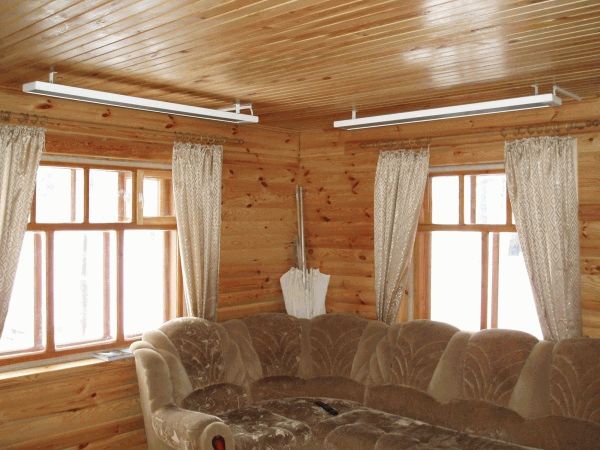

Infrared panels are gaining more and more popularity every year. They are easy to operate and provide quick heating of the room, and the built-in thermostat allows you to set the desired heating temperature in a few clicks. Moreover, installing infrared heaters with your own hands is quick and easy if you follow the instructions. Other advantages of this equipment include:
- long service life;
- noiselessness;
- security;
- spot heating;
- the possibility of using in open space.


It is not surprising that many people are interested in installing infrared heaters with their own hands. This process does not require any special skills and takes from 25 minutes to one and a half hours.
Training
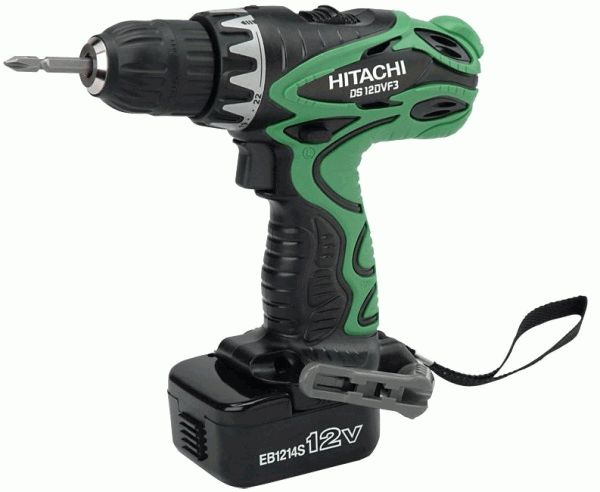

To install an infrared heater as expected, you need to have tools:
More sophisticated equipment can be used as needed. For example, if you are interested in installing several infrared heaters with your own hands, it is best to use a pyrometer for calculations. It will allow you to determine the warmest and coldest places in the room. Based on the information received, you will select the optimal location for each device.
Safety engineering
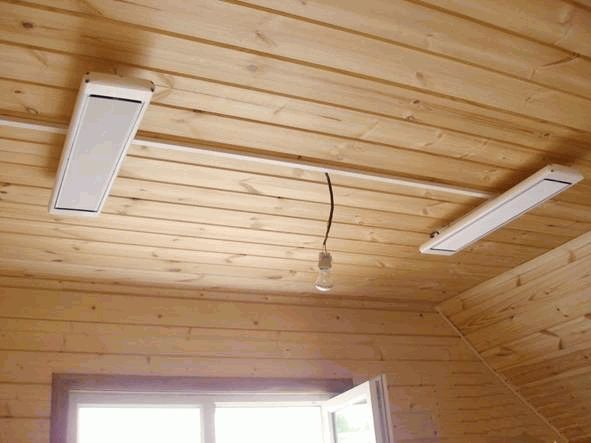

There is a set of measures that will prevent accidents both during installation and during operation:
- Do not install IR panels near flammable and explosive objects;
Electric cables must be laid on a non-combustible base;
The fasteners must not touch the heating element;
The height at which the panel should hang is 2.5-3.5 meters;
For a house or apartment, devices with a capacity of no more than 800 watts are bought.
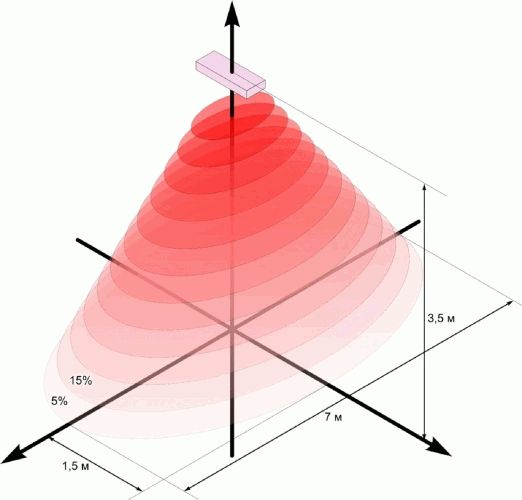

The device must not be switched on until installation is complete. The device must have an appropriate degree of protection if the panel is installed in a bath or sauna. Subject to all these rules, the installation of an infrared heater will be quick and easy.
Installation Recommendations
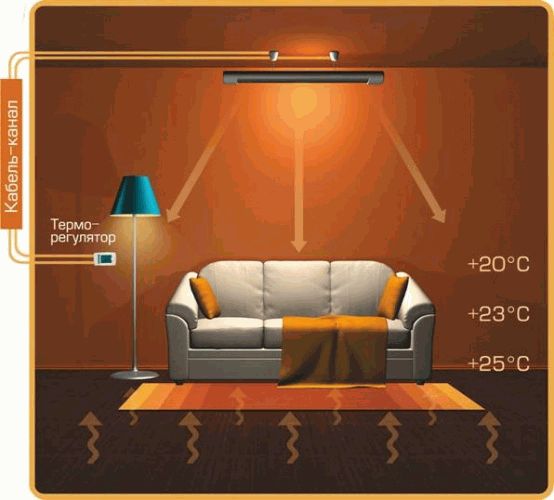

When installing infrared heaters with your own hands, you need the distance between the ceiling and the body to be at least 3 millimeters. In country houses, panels are taken out to heat the external space, for example, a summer kitchen. In such cases, insulating material or foil must be placed under the housing to increase efficiency.
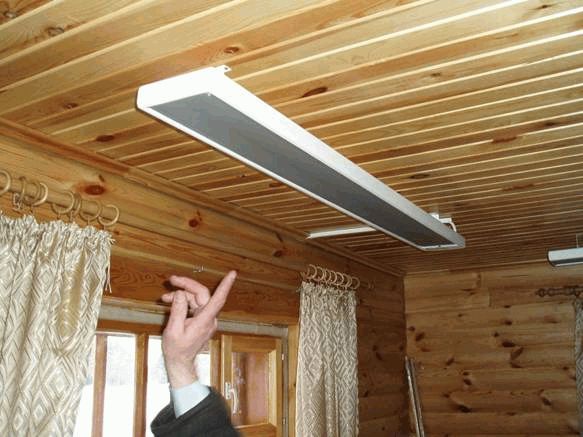

To make the installation of an infrared heater as simple as possible, it is better to place the panel with a connector to the wall. In most models, the contacts are self-tightening. The delivery package includes elements for fixing the device to the ceiling.
The installation process includes the following steps:
- take the device out of the packaging and place it on any flat surface with the heating plate facing down;
- mark the installation site and make several holes;
- screw in the screw rings;
- Hang up the chains by adjusting the height (if necessary).
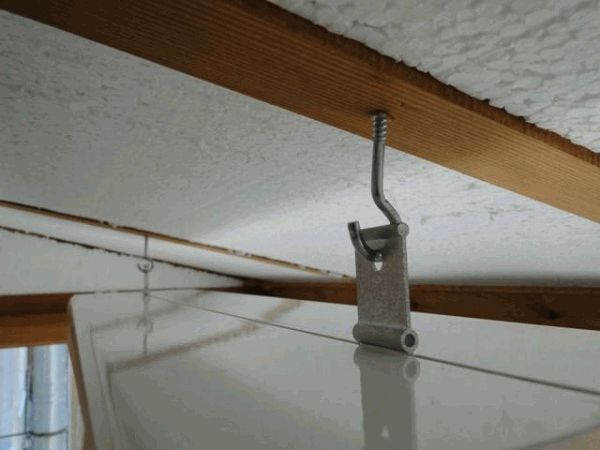

As you can see, installing infrared heaters with your own hands is not a particularly difficult process. The panels can also be wall-mounted, but the heating effect will be much less.


Installation of different models of IR heaters:
Connecting to the network
The device connects to a thermostat that will maintain the desired temperature. This is done through three terminals: ground, phase and zero. Accordingly, the supply cable must be three-core. Alternatively, you can use PVA 3x1.5.


The ends of the cable are connected to the terminals. The polarity is indicated at the ends of the wires. After the device is installed and connected, it is advisable to wipe the panel with an alcohol solution before turning it on.
Connecting multiple devices
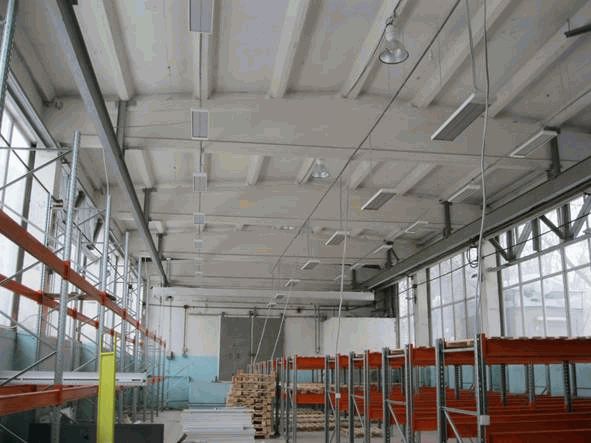

If you are interested in installing infrared heaters with your own hands in large rooms, then you need to take into account that you will need several devices. To ensure smooth operation, all panels are connected to one thermostat. This will effectively regulate the temperature throughout the facility.
Ceiling device installation recommendations and basic mistakes
For fixing and hanging the heater on the ceiling, it is advisable to use the fittings that come with the device.
So that the cable wiring does not catch the eye, a U-shaped profile is used along the wall and ceiling.
Thermostat
When installing, the owners often make the same mistake, forgetting that when installing several devices at once in one room, the total power must be taken into account. This applies to units that are connected to one thermostat.
Failure to follow this rule will disable the devices and power outages.
How to securely connect to the network
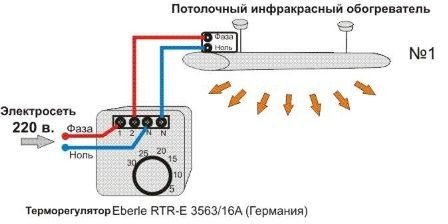

To ensure safety, you can take care of the grounding of the device. For this, the yellow-green cable is connected to the corresponding terminal.
Detailed instructions for installing and connecting an infrared heater to the ceiling and walls
Infrared heaters are gaining popularity due to their economy, safety and high performance. You can enjoy all the listed advantages only by correctly installing this device.
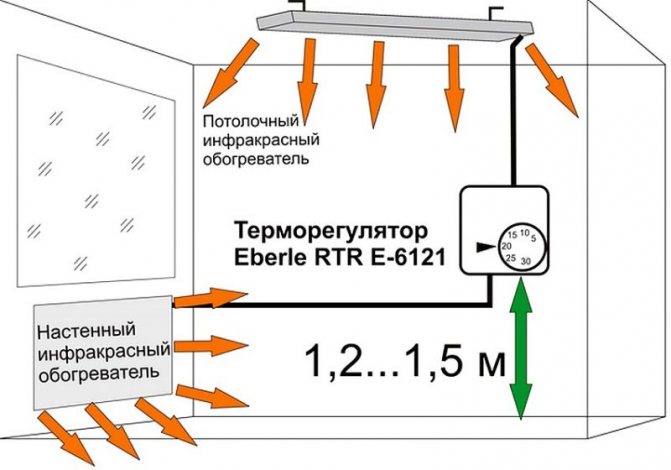

Preparatory stage
Infrared heaters can be used as the main heat source in a room. In this case, you cannot do without a careful calculation of heat losses. They depend on many factors, such as room size, materials, wall thickness, ventilation, and region, as each region has a minimum temperature rating.
List of required tools
At the preparatory stage, it is necessary to determine the place of fixing the heater and prepare the following tools:
- drill or hammer drill;
- screwdriver;
- screwdriver;
- pliers;
- roulette.
This is the required minimum of tools, without which it will not be possible to install the heater. In addition to them, you can use a pyrometer for calculations when installing several devices at once.
Where and how to install an IR heater?
The location of an infrared heater depends on its type and heating plan. It can be installed on the ceiling, on the wall, with or without a slope.


Safety engineering
Remember that installing IR heaters is an electrical operation. Therefore, it is important to maintain the utmost care and follow the safety rules:
- Never install the heater near flammable objects.
- Wiring must be routed over a non-combustible base.
- The fastening elements must not touch the heating element.
- Do not install devices with a power of more than 800 watts for a residential building or apartment.
- Do not connect the heater to the mains until installation is complete.


To use the heater more efficiently in your home, place it next to materials with high heat absorption rates, such as wood, carpets, stone walls. Have
The mounting surface must be strong enough as some heaters can weigh up to 28 kg, although many are of course lighter.
Location and height from the floor
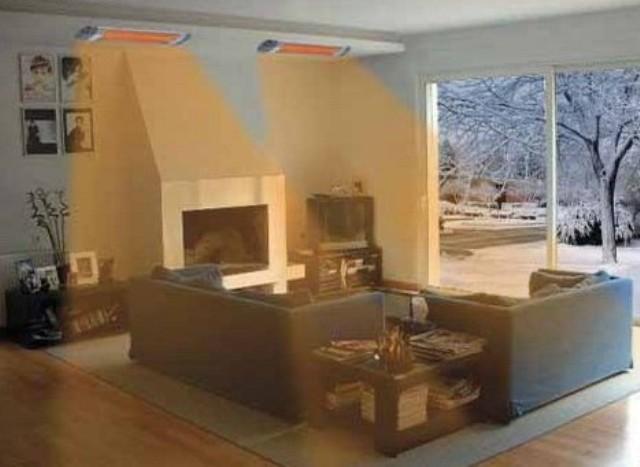

One of the important requirements for installing an IR heater is the distance to a person's head, especially in work areas, where a person spends a lot of time almost motionless. This distance should be at least 1.5 - 2 meters. In fact, it is determined by the power of a particular heater. If its power is up to 800 W, then it is quite possible to place it at a distance of 70 cm from the human body. If the power is 1-1.5 kW, then the permissible distance starts from 1 meter.
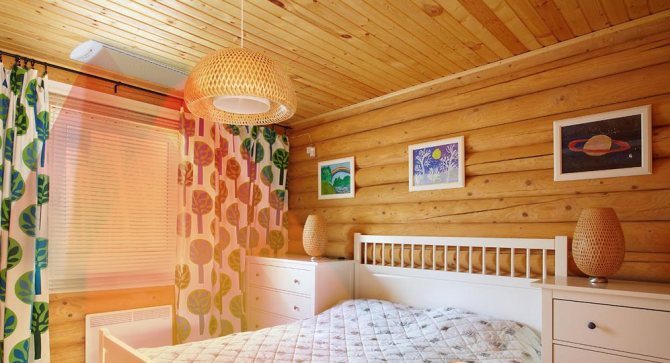

The specificity of different rooms determines the features of the installation of the heater and the optimal arrangement of devices. Where to place the heater:
| Room | Recommended location |
| Bedroom | Above the headboard so that at least ⅔ of the bed is under IR. |
| Kitchen | It is recommended to install the heater so that its rays are directed towards the window, the place where cold air flows from the street into the room. |
| Bathroom | On the ceiling, if this is the only source of heat in the room, or opposite a small area where a person is most often, if the IR heater is considered as an additional source of heat. |
| Hallway | On the ceiling facing down to the floor. It stays warm due to which it dries very quickly. The same applies to shoes - they also dry quickly and remain warm. However, it is important to remove it so as not to dry it out, thereby not spoiling it. |
Basic models of wall mounted infrared heaters
Wall mounted IR heaters are represented by a whole army of all kinds of models. They differ in their power, external data, the presence and absence of thermostats, design, fasteners, the presence of protective modules and many other factors. Let's take a look at the most popular models and take a quick look at their characteristics.
Heaters Royal Clima RIH-R2000G
Quite good infrared devices, the power of which varies from 0.7 to 3 kW. According to the manufacturer, they will last at least seven years... The heaters are enclosed in gray neutral cases, therefore they harmonize well with white ceilings. However, they can be hung in almost any interior, except for a designer one. These devices belong to the ceiling, but nothing prevents them from being mounted on the wall. By the way, mounting brackets are included in the kit.
Delonghi HMP1500
This model belongs to infrared micathermic heaters. She is can be installed both in the floor and in the wall version... The device is painted black, but this does not make it look coal-black - the dark tone is brightened up with a thin metal mesh. Wall brackets are already supplied with this heater as standard. So you can quickly mount it in the right place and start enjoying the warmth.
The power of the device is 1500 W, but there is a switch on board that allows you to reduce the power consumption in half. The thermostat knob is also located here. If the appliance accidentally falls to the floor, it will automatically shut off. It also has an automatic overheating shutdown function. The device will be optimal for heating multi-room households and small country houses.
IR heaters Thermik-S
Another series of infrared wall heaters.An interesting fact here is that the minimum power of the devices is only 0.1 kW. They can work both as main heating and as auxiliary equipment. By the way, a 0.7 kW model is capable of heating an area of up to 12 square meters. m. Be sure to pay attention to this if you want to buy really economical equipment.
Thermik-S devices are dressed in simple white cases and are well suited for wall installation under windows or on blank walls. You can also use these heaters in those places where central heating does not provide the most efficient heating - this is exactly what the lowest-power modifications were created for. The front panel is made of steel and covered with three layers of matte enamel. The surface temperature does not exceed +80 degrees - this is already a big plus.
IR heaters Almak
Large series of wall mounted infrared devices. It is characterized by a pleasant design and a variety of colors. Due to the large power range, Almak heaters can be used both in residential and non-residential premises. note that the original form factor is still ceiling... But the manufacturer allows for wall mounting. Thermostats are used to control the apparatus.
The power of the equipment varies from 0.5 to 1.5 kW, so you can always find the most optimal solution. The easiest way is to order the equipment on the official website of the manufacturer, with home delivery. In addition to the devices themselves, you can purchase thermostats here. The order form from the manufacturer is very flexible, so you can easily select the heaters and additional accessories you need in terms of power.
IR heaters "Dobroe teplo"
Wall-mounted film infrared heaters-pictures "Kind warmth" are really very similar to pictures. They are made of flexible heating elements with a flexible radiant surface, so they can be easily hung on any wall - they are not only flexible, but also very lightweight. The manufacturer assures that one 50x50 cm heater is capable of heating an area up to 10 sq. m. Considering that the power of such a device is only 120 W, then the result is just great.
Heaters PION Thermo Glass
If you need designer wall mounted infrared heaters with thermostat, be sure to pay attention to this lineup. The advantages and features of this equipment:
- Stylish glass cases;
- Connectable thermostats;
- Efficiency - for example, a 600 W model can heat an area of up to 12 square meters. m .;
- Installation height - 2-3 meters;
- Highest level of reliability.
These are really beautiful and attractive wall mounted IR heaters. IR heating equipment Pion can be mounted both on walls and ceilings. Unusual design, high-strength glass, the ability to work in a humid atmosphere - all this makes this technique ideal for rooms with any design. A pleasant addition will be the presence of overheating systems. The surface temperature ranges from +100 to +300 degrees.
Is it possible to heat an apartment with infrared heaters
The principle of operation of an apartment IR heater is associated with the conversion of electricity into infrared radiation. The structural difference significantly affects the efficiency of the plant Infrared rays affect furniture, floors, etc. They penetrate approximately 9 cm. Heated objects give off heat to the air in the room.
To heat an apartment to a comfortable temperature, you will need to select equipment with a capacity of 100 W per m². Therefore, for a room of 20 m², you need a 2 kW emitter, or 1-1.2 kW each.


Varieties and characteristics of thermostats
A thermostat is a device that periodically measures the air temperature in a room and, depending on the results obtained, adjusts the operation of the heater. That is, if the air temperature reaches the set point, the power is limited and the heater stops working. As soon as the air cools down, the device enters the active phase again, thus constantly maintaining the required level of heat in the room.
The design and operation of temperature control devices can differ significantly from each other. There are two main types of thermostats:
- Mechanical.
- Electronic.
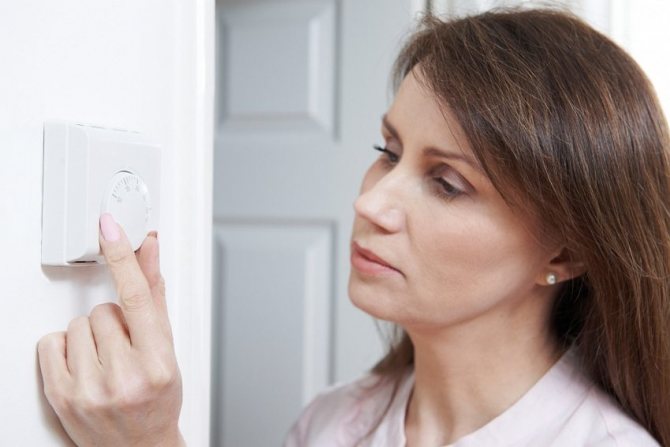

Mechanical type thermostat for infrared heater
The first version of thermostats is a small plastic box, the outer part of which is equipped with a switch. As a rule, it is round, which allows you to smoothly change its position. The division value may be different, for example, in some models it is 1 °, while in others the transition occurs immediately from 2 ° to 5 °, etc. In addition, on the case there is a power button and a light indicator showing whether the device is active in this moment.
There are also more modern mechanical models of thermostats that are equipped with a display. True, there is not so much data displayed there, and temperature control is carried out using only two control buttons.
Useful advice! It is convenient to use a mechanical thermostat only if one of the tenants is present in the house for a considerable time. This is an important point, since it is better to turn off the device in the absence of people. Remote control function is not provided.
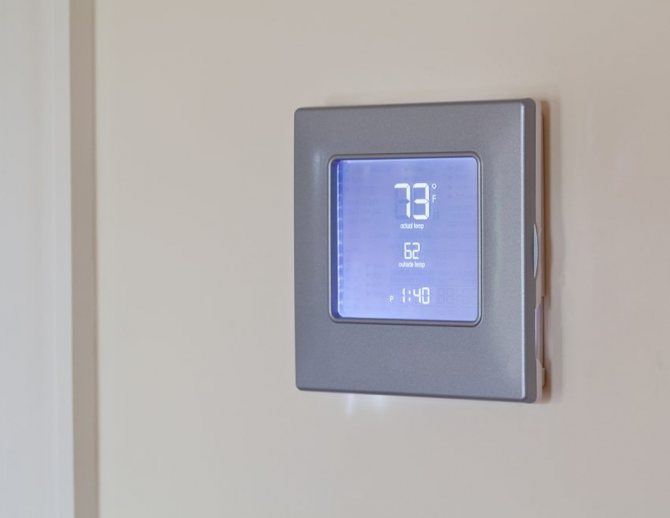

An electronic version of the thermostat that controls the operation of the infrared heater
Electronic thermostats have much greater control capabilities. The design and construction of these devices are constantly being modernized - even liquid crystal screens are used for the manufacture of modern models.
Depending on the selected model, setting and control can be carried out both using buttons and touch. Some devices use special hinged covers to protect the screen and create a more attractive appearance.
Such devices can be used without problems even in those houses where the owners are often absent or live seasonally. The device is easy to program and can be easily controlled remotely using mobile devices. The only difficulty in purchasing such a thermostat is the rather high cost.
What are household IR heaters?
Modern modifications of household infrared heaters can be divided into several classes, according to the type of construction, method of attachment, and functionality.
Classification by type of attachment
Stationary units - they are mounted on the ceiling or wall and have maximum performance. Both local and general heating of the apartment by wall infrared heaters is allowed. The angle of inclination of the emitter for better heating of the room can be changed using a special bracket.
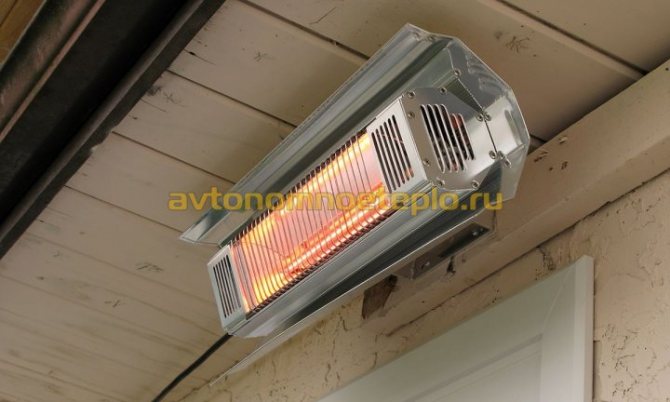

Mobile heating devices - this type of climatic equipment is installed on the floor or on a special tripod. The efficiency of portable heating devices is slightly lower than that of stationary radiators. There are a lot of obstacles on the path of radiation that prevent uniform heating.
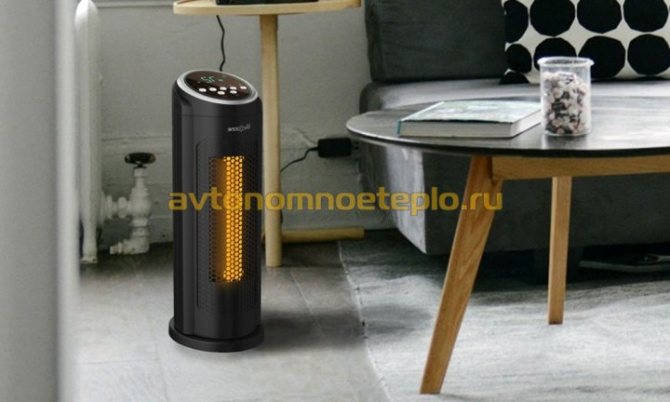

Radiation source classification
Is it profitable to heat IR heaters
It may seem that the cost of heating with electric radiators is prohibitive. But this is true only in the case of operation of heaters without a thermostat, operating in a constant mode.
If you calculate the heating in the apartment, you can get the exact cost of the costs.
- If a thermostat is used, the heater will only run 60% of the time.
- For a 2 kW heating device, only 1.2 kW will be required to operate for an hour.
- The heater will consume 29 kW per day, 870 kW per month.
- You can calculate the consumption of electricity for heating your home for a month using the average cost of electricity set for the region of residence.


Advantages of thermostats
To reduce the consumption of electricity, the ability to control, maintain a given temperature in a building while releasing heat, various types of thermostats are used. All of them are freely available for sale.
If the devices are installed without using a thermostat, the energy efficiency of the device is reduced, since when calculating the rated power for a certain volume of the room, the power is taken, which makes it possible to heat the room in the most severe frosts. When the temperature outside the window rises, the device works continuously using all its power.
The need to include the thermostat in the electrical circuit to the device is not only cost-effective, but also allows you to select the mode for customization required temperature in the building.
How to choose a household IR heating device
First of all, it is necessary to select sufficient power of the climatic equipment. As already noted, for continuous heating of a room, it is required that the heater's performance is not less than 100 W for every 1 m² of the room.
When choosing a suitable installation, pay attention to the following features:
- Built-in thermostat - reduces energy consumption by 40-50%.
- Protection system - the safety of household infrared heaters for humans is provided by protection sensors against overheating and accidental fire, in the event of a heating panel falling.
- Remote control - included with all ceiling panels. Mobile heaters and wall-mounted units are completed with remote control at the request of the customer.
- Radiation source. The climate in your apartment largely depends on the heating conditions. Tubular radiators are considered to be the most comfortable to work with.


Thermostats VMT 1 and VMT 2 how to connect
Unlike radiators, infrared heaters help to provide heating over a larger area at a much lower temperature. This makes it possible to economically heat modern homes. Controls should be used to provide thermal comfort for users and controlled operation of floor standing equipment. Below is information on how to connect the Ballu BMT 1 and BMT 2 thermostat, the features and benefits of these devices.
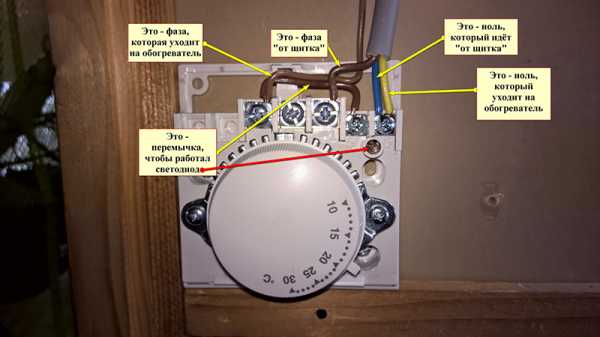

Control via the TDC thermostat
Thermal comfort is a subjective feeling of every person. This is a condition in which people do normal household chores without excessive heat or hypothermia. Thermostats are needed to regulate the temperature, they help infrared heaters to function properly. TDC is a state-of-the-art electronic feedback device that maintains an accurate set temperature.
Its control system is very simple and at the same time effective - you should set the value that you want to achieve in the selected room. The sensors detect the temperature and then turn on the device to reach the desired value. After that, the heating devices are automatically turned off. The next turn-on occurs when the temperature starts to drop. Such a control system saves energy - the heaters operate only about 4-6 hours a day.
Before answering the question, the TDC thermostat 1: how to connect, you should know that the temperature in the apartment largely depends on the location of the heater. It is recommended to install it in an accessible place, away from drafts (windows, doors).
Main advantages
The main advantages of BMT thermostats include:
- ease of use (just use the dial to set the desired room temperature);
- low purchase and follow-up costs.
Thus, controlling the temperature inside the house maintains sufficient thermal comfort and reduces heating costs.


Before installation
You should know that the answer to the question: BMT 2 thermostat - how to connect, is directly related to the installation of Ballu BMT 1
To install them safely, it is recommended to follow these precautions:. disconnect the heater from the mains before starting work; use wires with standard colors and suitable cross-sections
- disconnect the heater from the mains before starting work;
- use wires with standard colors and a suitable cross-section.
Meaning of wire colors:
- brown phase - control cable;
- blue phase - neutral wire N ("zero");
- red or black - phase conductor.
We recommend using wires with a cross section of 1.5 mm2.
Installing a thermostat
A few words about how to connect the BMT Ballu thermostat 1. The device must be installed in sequence:
- Slide off the cover of the thermostat and remove the screws and plugs.
- In the socket, using an indicator screwdriver, determine the phase.
- Connect the brown wire (phase) to the sensor.
- According to the diagram, connect one end of the heater to the third wire.
- Connect the blue wire to the remaining end.
- Place a jumper between the third and fifth wires.
- After an intermediate test in which the device is ringed to check if the thermostat is working, a plastic box is put on.
The figure below shows how to connect the Ballu BMT 1 thermostat according to the connection diagram. A wiring is laid to the location of the device, which is connected to zero or phase.
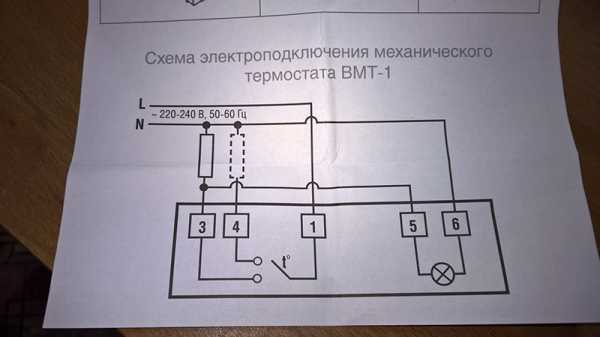

On the Ballu BMT 2 thermostat, the wiring diagram is similar to that given above, only the terminal numbers are different. After installation, the device is connected to an infrared heater with a separate line.
Article Rating
How to correctly place an IR heater in an apartment
During installation it is recommended:
- Position heaters in the center of the ceiling. This solution is allowed only when creating local heating.


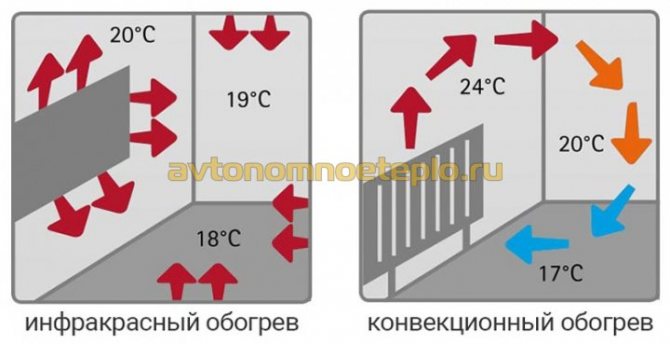

The use of infrared heaters in residential premises helps to solve the heating issue in the best way. The advantage of emitters is that a person begins to feel warmth immediately after turning on the equipment. After warming up the room to a temperature of 20 -28 ° C, the devices automatically maintain the required climate in the room.
Wireless thermostat connection diagram.
At the moment, wireless thermostats are widespread and have seriously pushed their wired counterparts. It is easier to work with them, there is no need to pull wires from the thermostat to the sensor throughout the house. It is enough just to set the address of the sensor and install it in a place with stable signal reception from the thermostat. As for the connection diagrams for such devices, there may be two of them:
Open circuit connection diagram.
The diagram is no different from the wiring diagram for a mechanical thermostat. The inclusion of a boiler, pump or servo drive occurs when a current appears in the circuit.
Potential (voltage) connection diagram.
In this diagram, when the circuit is connected, the thermostat transmits a voltage to the boiler input, which turns on the boiler, pump or servo drive.
